This homemade Italian pasta recipe is the authentic recipe for pasta all'uovo (pasta with egg) which is the dough of classic fresh homemade pasta like tagliatelle, fettuccine, spaghetti, lasagne, tortellini, and ravioli. Once you master it, it is a fun recipe to make with children and serve with your favorite sauce.
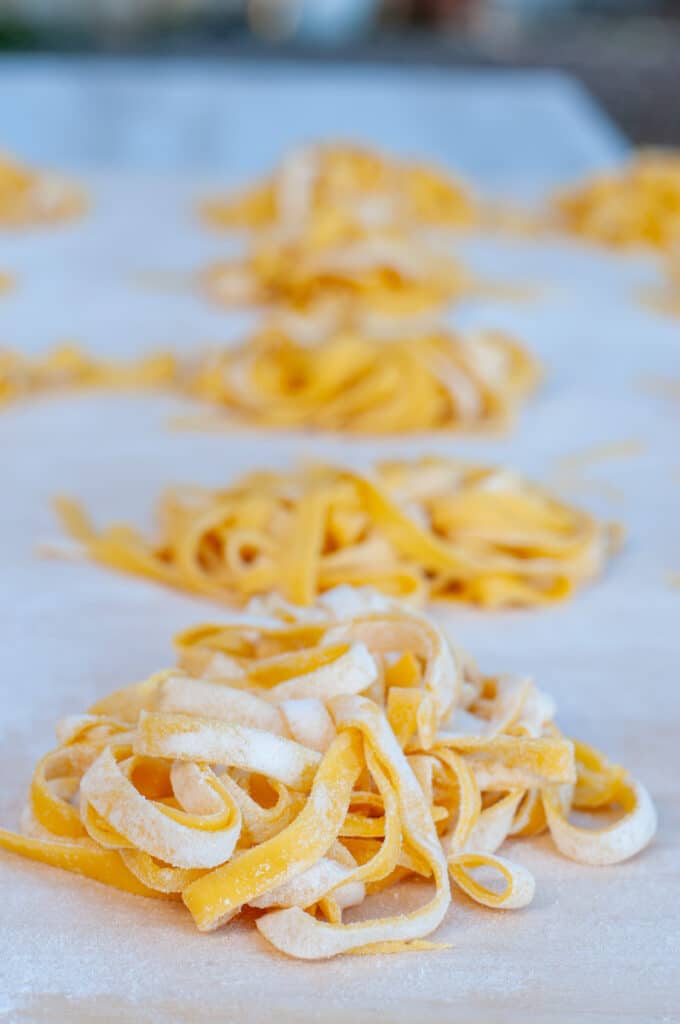
Jump to:
While it is believed that pasta was introduced in Italy by Marco Polo in the 13th century back from his trip to Asia, pasta was already made in Italy way before.
There were traces of pasta in the Etruscan tombs in the 4th century BC, and recipes were found in the famous cooking book from the Roman Empire "Res Culinaria" by Apicio.
In addition, the Chinese noddle and the Italian pasta are not very similar.
In China, pasta is made with rice flour, while Italian pasta is made with durum wheat semolina.
Their consistency, taste, and cooking methods are very different.
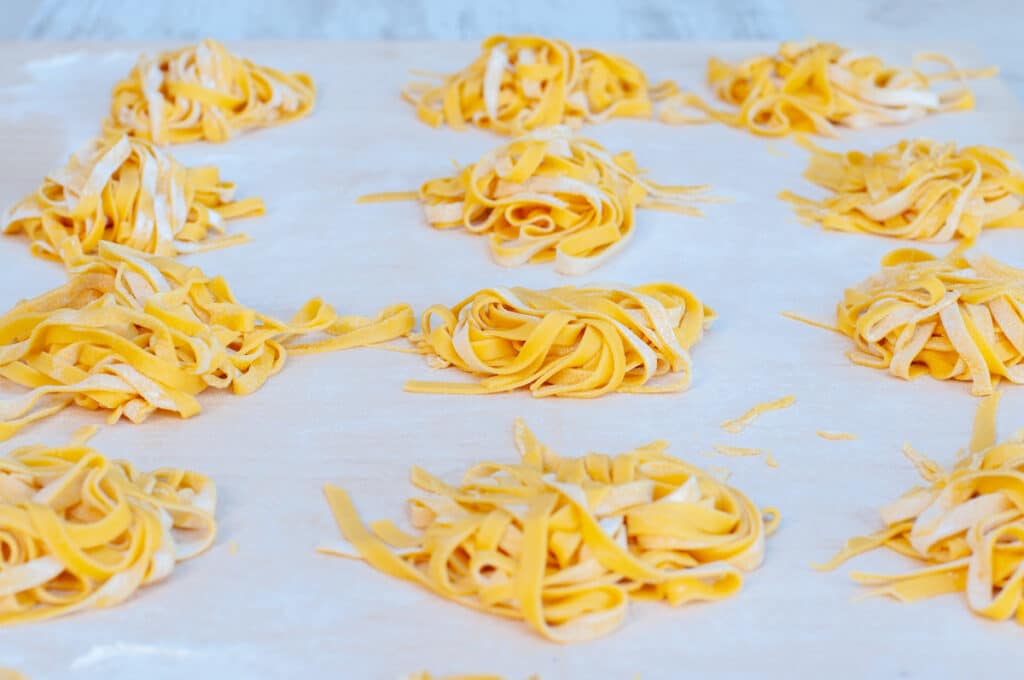
Pasta by region
Italian pasta can also vary widely by region. Each region has its traditions, technique, shape, and styles.
This recipe is for the classic pasta all'uovo used to make tagliatelle, fettuccine, and lasagne and originates in the Region of Emilia Romagna.
Emilia Romagna is the region where the durum wheat semolina flour used in this recipe is farmed in its fertile fields of the Po valley.
Using this pasta all'uovo dough as a base, each local town has created its pasta specialty, which goes from lasagna to tagliatelle, tortellini, and ravioli.
If you want to know more about Italian regional cuisine, you can read the article: Traditional Italian Recipes By Region
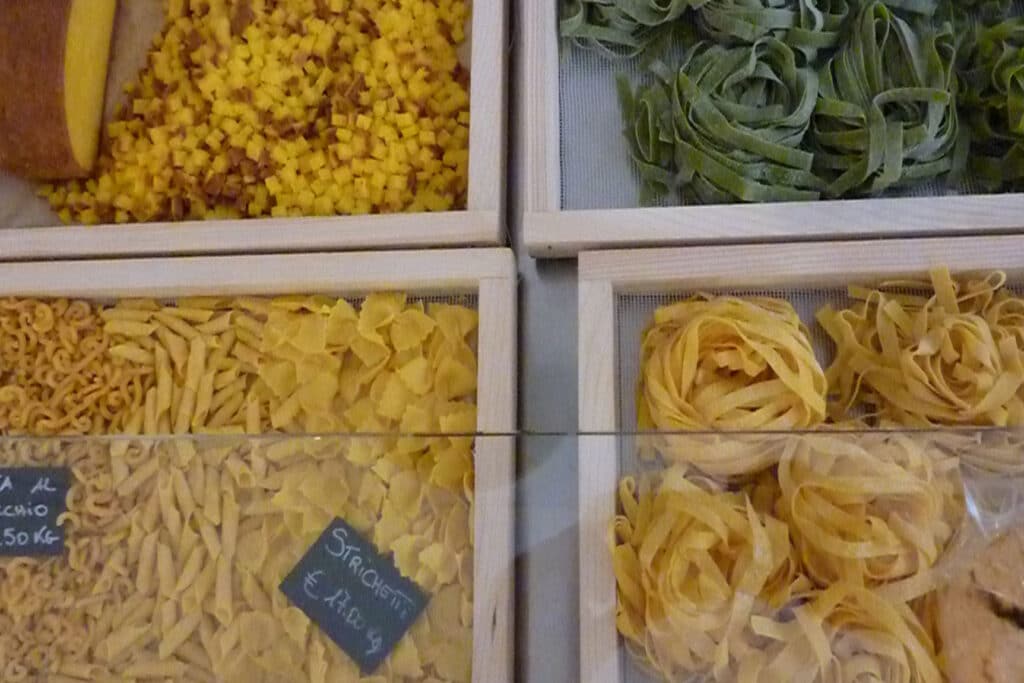
What flour to use
The traditional Pasta all'uovo is made with durum wheat semolina flour. Making it with regular flour will not give the same results.
Regular flour will make the pasta too tough and not result in the right consistency.
You can buy the Semolina flour in this Amazon affiliate link.
If you cannot find the Semolina flour, you can try using the same flour you would use for bread.
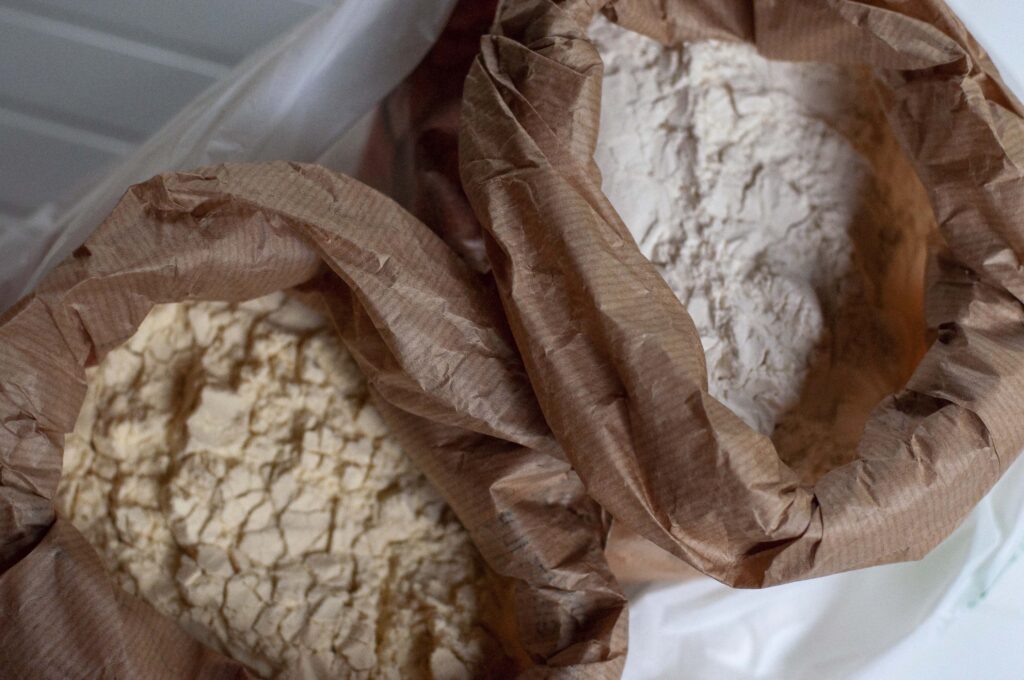
Ingredients
The choice and the measurements of the ingredients are very important.
- For each person, you would need 100 gr (3.5 oz) of semolina flour and for each 100 gr ( 3.5 oz) of semolina flour, you need 1 egg.
- 100 gr (3.5 oz) of semolina flour is about 0.6 Cups, so slightly more than half a cup.
- Traditionally, eggs with a dark shell were used as the yolk would have a brighter red color, giving the pasta a nice golden look.
- For every three large eggs, you would need to add 2 teaspoon of olive oil and a pinch of salt.
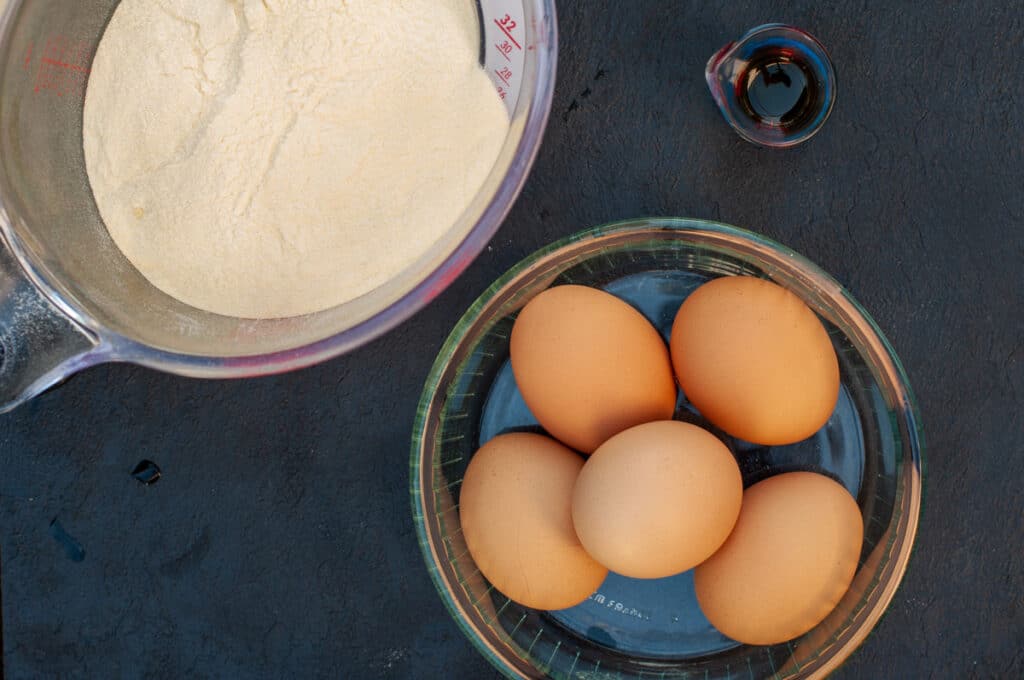
- American flour may also need 1 tablespoon of water. Add it if the dough crumbles.
- The dough should be elastic and not stick to the fingers; otherwise, it will not pass smoothly between the pasta rolls.
- Make sure you have a large clean work surface to lay the sheets on once they are rolled. They take up a lot of space.
- You will also need some regular all purpose flour to dust the surface where you lay the pasta sheets, so they don't stick to each other.
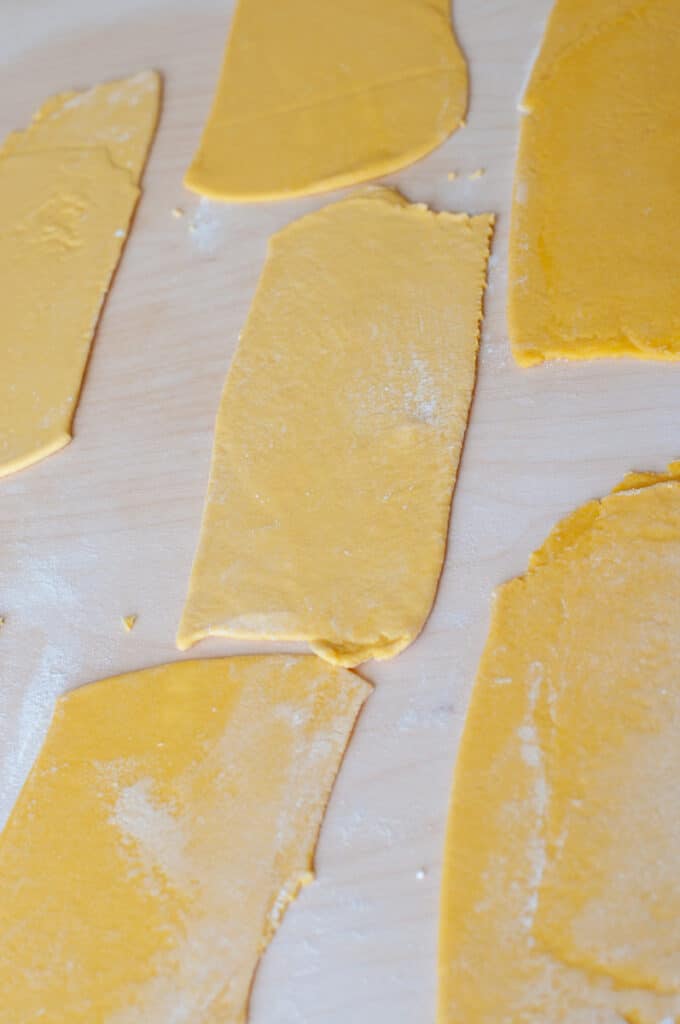
Making pasta with KitchenAid mixer
Making pasta with a rolling pin is not difficult, but it is long and time-consuming. So buying a pasta machine is worth it if you make homemade pasta regularly.
The dough must be mixed for a long time to achieve smooth and elastic consistency. It is so much easier to use an electric mixer.
I use the KitchenAid stand mixer as it also has the pasta sheet roller to shape the pasta. For me, it was worth the investment as I make homemade pasta quite often.
I also use the vegetable strainer Kitchenaid attachment to make my fresh tomato sauce and potato gnocchi.
I have my own chickens and plenty of eggs to use.
Although KitchenAid is expensive and not for everyone. If you don't want to spend as much, you can use your electric mixer to make the dough and invest in a regular Pasta Machine to roll the pasta.
N.B.: Kitchenaid pasta attachments and pasta machine should not be washed with water otherwise, the rolls will rust. Use a brush to brush off the remaining flour.
If the rolls still look dirty, pass a small amount of dough to remove the dirt and throw it away.
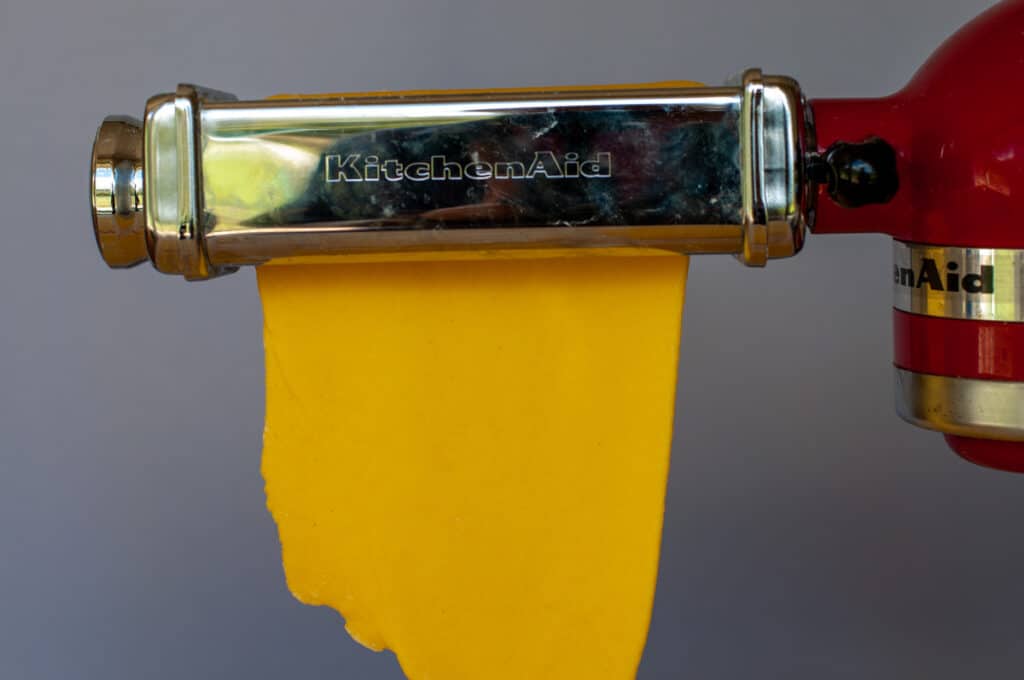
Instructions
Making the fresh pasta dough
In this recipe, I am using 500 gr (1 lb - 3 cups) of Semolina flour, five eggs, and 1 tablespoon of olive oil:
- Put the eggs, the semolina flour, and the olive oil into the mixing bowl
- Mix the dough with the dough hook until it is smooth and elastic; it will take a few minutes
- Wrap the dough ball in plastic wrap and let the dough rest for 30 minutes
- On a large well-floured surface, cut the dough into six pieces
Hint: to flour the surface, you can use all purpose flour
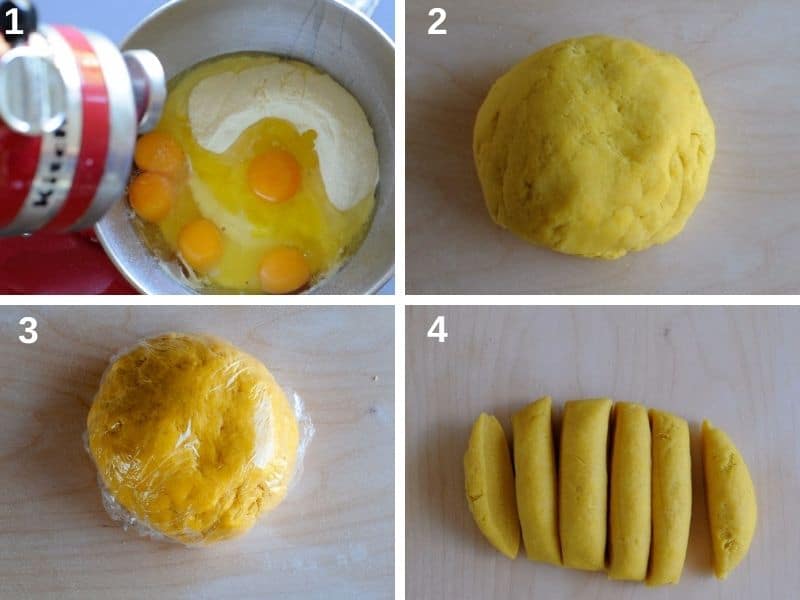
Making the pasta sheets
- Pass the first piece of dough through the rolls (keep the speed of the rolls low, on KitchenAid I use 2)
- Rolls thickness widest setting at number 1
- Fold the sheet of pasta and pass it through again several times
- Until the dough is smooth and you hear a bubble burst
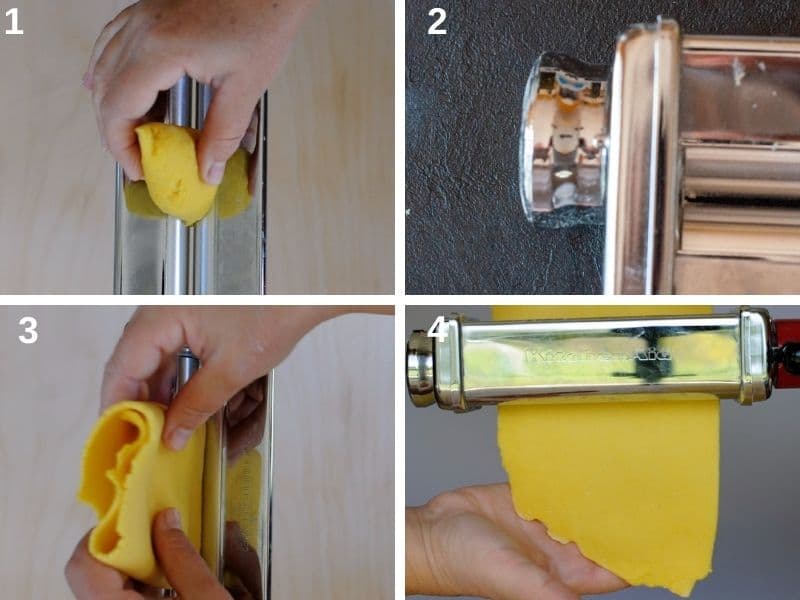
What to do if the sheet tears
- If the dough tears
- Fold and dust the surface with additional flour, you can use all purpose flour
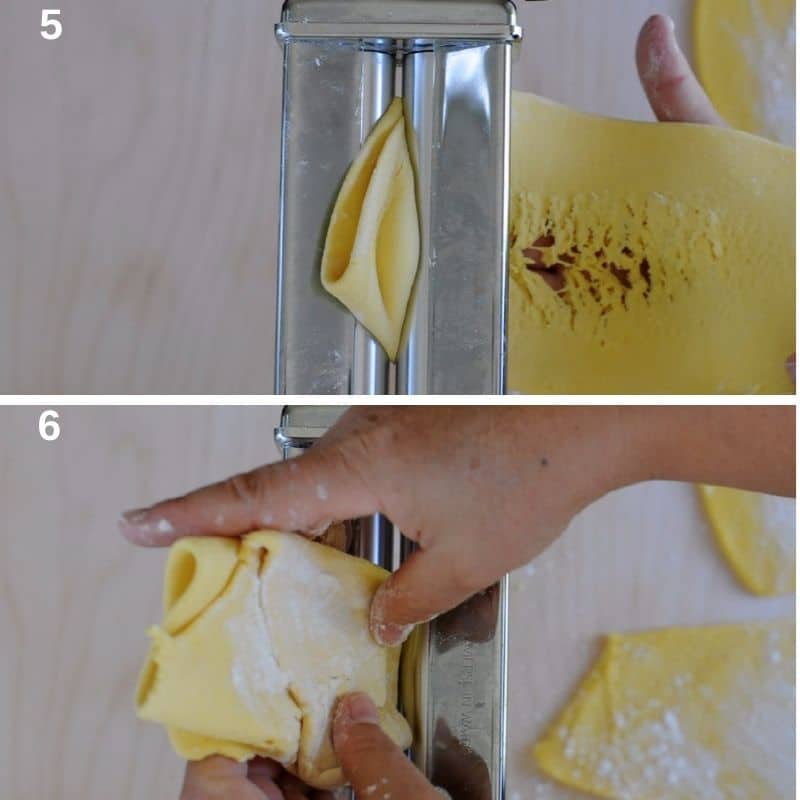
- Do the same with all the pieces of dough until all the dough is shaped in thick sheets (about 3 mm - ⅛")
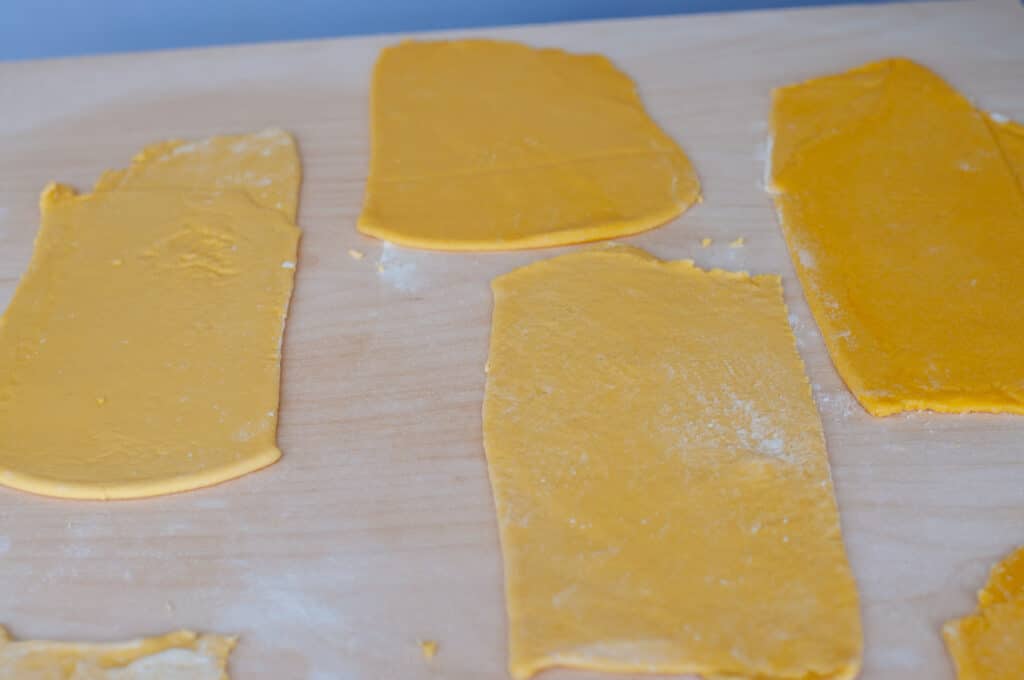
Thinning down the pasta sheets
- Once all the dough is shaped into sheets
- Reduce the rolls thickness settings to number 2
- Pass all the sheets through one by one (low speed)
- If the sheets get too long, cut them in two with a sharp knife ( I usually keep my sheets 20 cm - 8 in long)
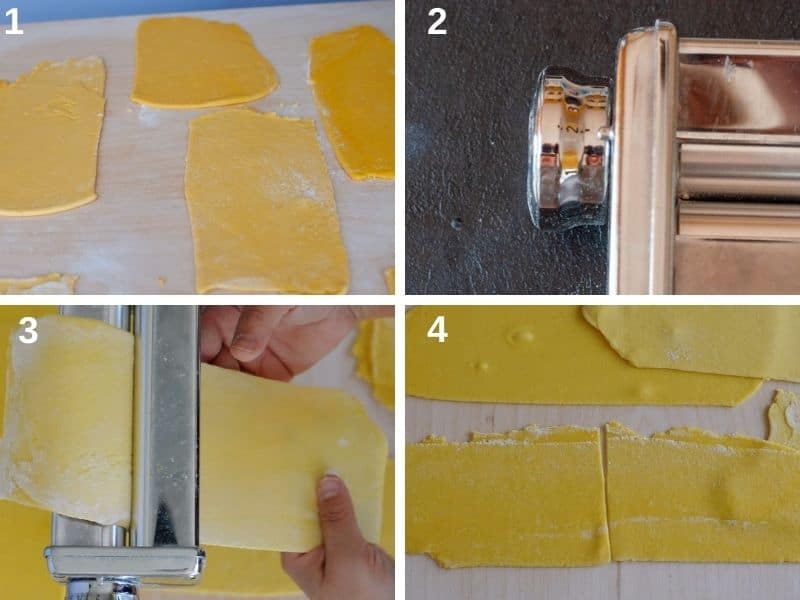
- Keep reducing the thickness of the rolls to number 3
- Pass all the sheets through the rolls again
- Reduce the thickness to number 4 and pass all the sheets again
- The sheets will become very long. If you don't have enough space and you have to overlap them, flour their surface so they don't stick to each other
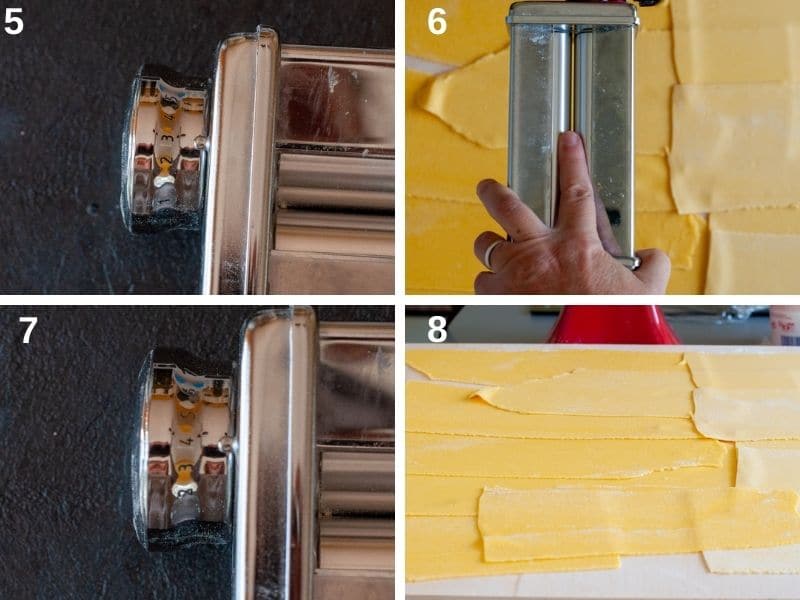
How thick should the pasta sheets
The thickness of the pasta sheets depends on their final use. On KitchenAid the settings are as follows:
- Roller Setting Number 1 and 2 to knead and shape the dough into sheets
- Roller Setting Number 3 a thicker pasta used for stew or broth
- Roller Setting Number 4 is used for lasagna, tagliatelle, fettuccine, and spaghetti
- Roller Setting Number 5 for tortellini and ravioli
Once the sheets have the thickness required, you can roll them into the final shape.
For homemade lasagna noodles, you can use the roller setting number 4
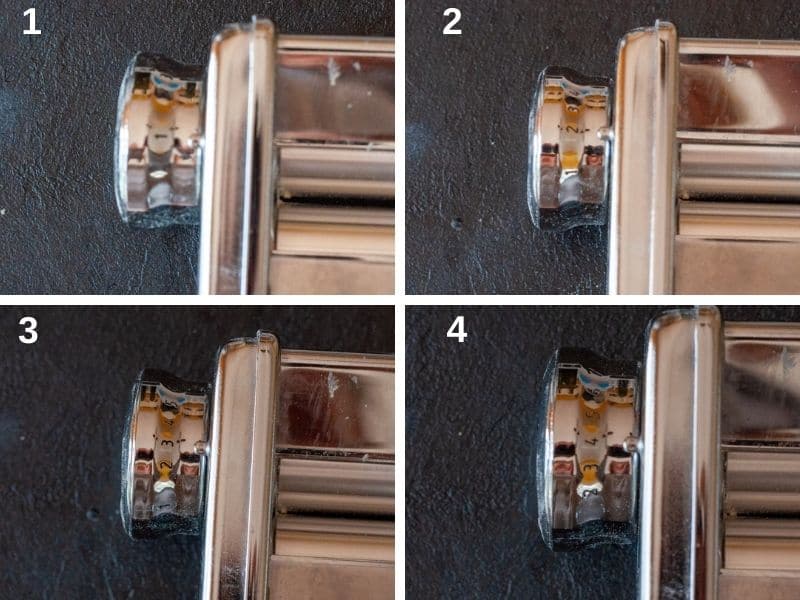
Making tagliatelle
- Insert the fettuccine attachment into the machine and pass through the sheets one at the time
- Place each batch of tagliatelle on the floured board or on pasta drying rack
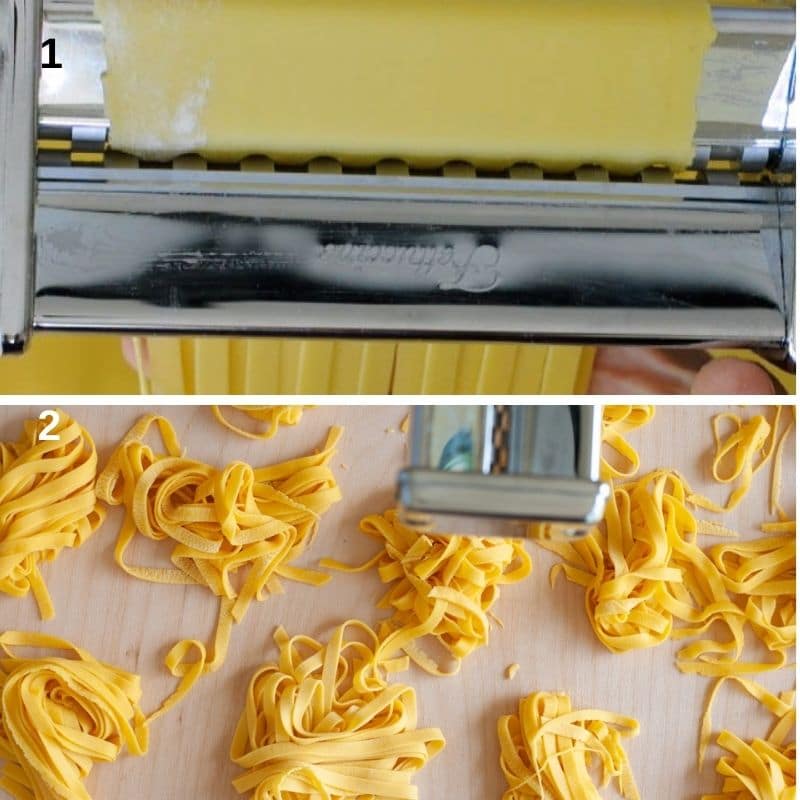
Making spaghetti
- Insert the spaghetti attachment into the machine and pass through the sheets one at the time
- Place each batch of spaghetti on the floured board or on pasta drying rack
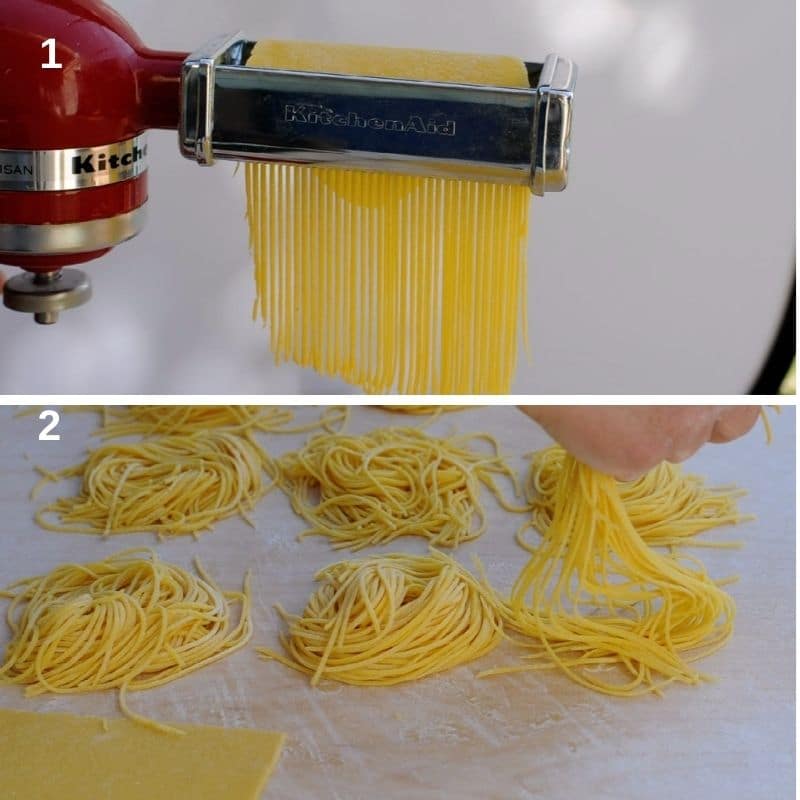
How to store it
The pasta can either be cooked immediately or stored for later use.
- If you want to store the pasta for later use, spread them on the board
- Let them dry for a few hours covered with a cloth
- Store in an air thigh container and use within one week
- If you want to keep them for longer, you can freeze them
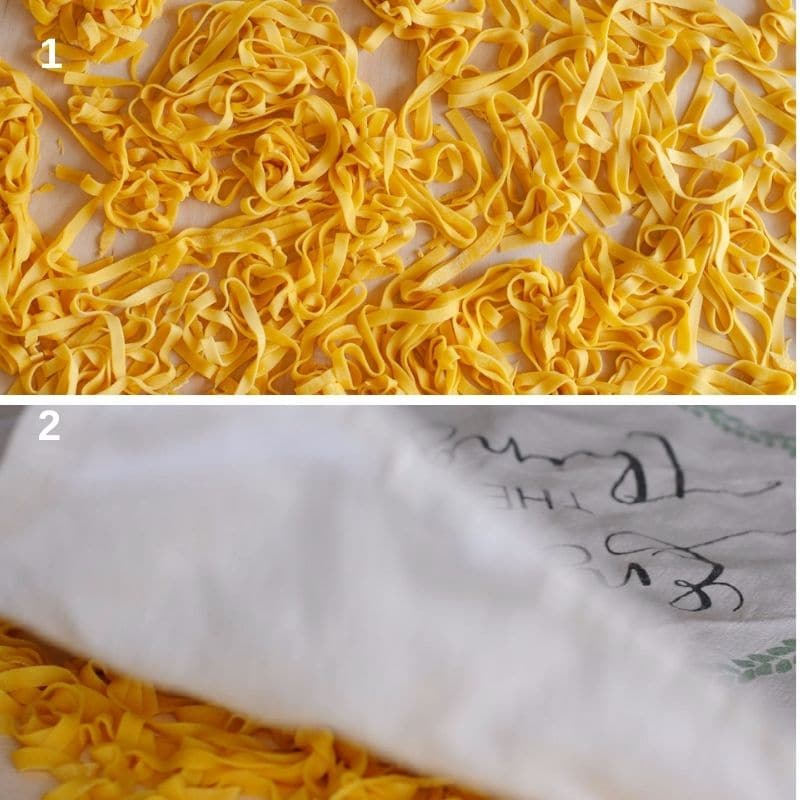
How to cook it
Homemade Italian pasta is boiled in salted water just like regular pasta.
You need to use a large pot of water,
Fresh pasta cooks faster than dried pasta, but it only requires 4 minutes of the rolling boil to cook al dente.
If you are not familiar with how Italian cook pasta, here are the main rules we follow: How To Cook Pasta Like An Italian
Sauces for fresh pasta
Homemade Italian pasta all'uovo is usually served with a meat sauce like ragu (lamb ragu) or Bolognese. Here in Provence, they serve it with Daube Provencal.
Fresh pasta all'uovo has a rich taste, so it can also be seasoned with a simple tomato sauce, butter, or fresh truffle.
Once served, let your guests top it with some freshly grated Parmesan.
Once you make this homemade Italian pasta recipe a couple of times, it will become easier and easier to make.
It is so easy that once you mastered it, I encourage you to make it with your young children.
They will love seeing the tagliatelle coming out of the rolls and touching them with their little fingers.
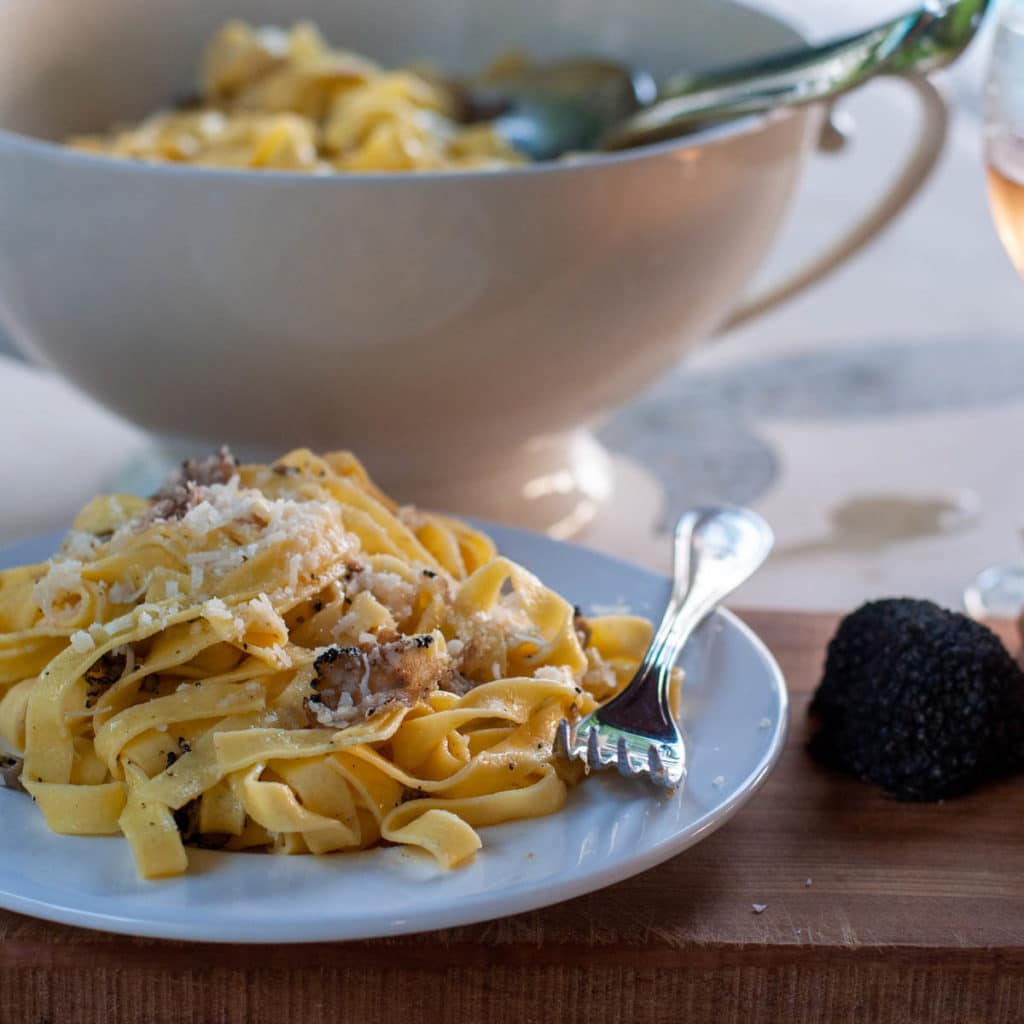
Other recipes you may like
If you like to try homemade pasta, I am sure you will also love to make fresh homemade gnocchi, and here are some recipes you can try:
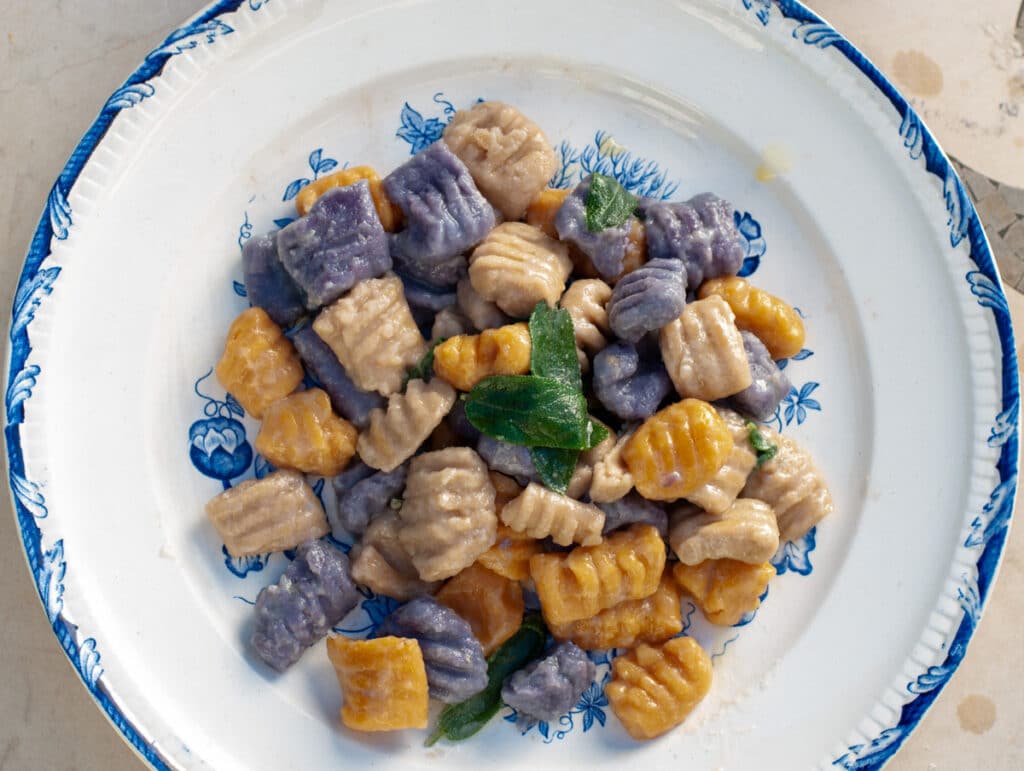
FAQ
Fresh pasta cooks faster than dried pasta, but it only requires 4 minutes of the rolling boil to cook al dente.
It will last one week stored in an air-thigh container. If you want to keep it for longer, you can freeze it.
If you are making a homemade Italian pasta recipe, leave your comment below I would like to hear from you. You can find more delicious ideas if you FOLLOW ME on Facebook, YouTube, Pinterest and Instagram or sign up to my newsletter.
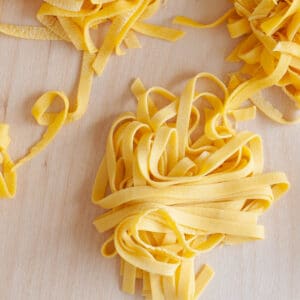
📋 Homemade Italian Pasta Recipe
Ingredients
- 3 cups semolina flour
- 5 fresh eggs
- 1 tablespoon extra virgin olive oil
- 1 cup flour to dust the surface
Instructions
Making the dough
- Put the eggs, the semolina flour, and the olive oil into the mixer3 cups semolina flour, 5 fresh eggs, 1 tablespoon extra virgin olive oil
- Mix the dough until it is smooth and elastic, it will take few minutes
- Wrap the dough in cling and let it rest for 30 minutes
- On a large well-floured surface, cut the dough into 6 pieces1 cup flour
Making the sheets
- Position the machine rolls thickness settings at number 1
- Pass the first piece of dough through the rolls (keep the speed of the rolls low, on KitchenAid I use 2)
- Fold the dough and pass it through again several times
- Until the dough is smooth and you hear a bubble burst
- Do the same with all the pieces of dough until all the dough is shaped in thick sheets (about 3 mm - ⅛")
What to do if the sheet tears
- If the dough tears
- Fold and dust the surface with regular flour
Thinning down the pasta sheets
- Once all the dough is shaped into sheets
- Reduce the rolls thickness settings to number 2
- Pass all the sheets through one by one (low speed)
- If the sheets get too long cut them in two with a sharp knife ( I usually keep my sheets 20 cm - 8 in long)
- Keep reducing the thickness of the rolls to number 3
- Pass all the sheets through the rolls again
- Reduce the thickness to number 4 and pass all the sheets again
- The sheets will become very long. If you don't have enough space and you have to overlap them, flour their surface so they don't stick to each other
Making tagliatelle
- Insert the tagliatelle roll into the machine and pass through the sheets one at the time
- Place each batch of tagliatelle on the floured board
Making spaghetti
- Insert the spaghetti roll into the machine and pass through the sheets one at the time
- Place each batch of spaghetti on the floured board
How to store it
- The pasta can either be cooked immediately or stored for later use.
- If you want to store the pasta for later use, spread them on the board
- Let them dry for few hours covered with a cloth
- Store in an air thigh container and use within 1 week
How to cook it
- Boil it in salted water for 4 minutes
- Drain, season, and serve immediately
Video
Notes
- Regular flour will make the pasta too tough and will not have the right consistency. If you cannot find the Semolina flour, you can try using the same flour you would use for bread.
- For every 100 gr (3.5 oz) of semolina flour, we use 1 egg. This is the amount we would serve per person
- 100 gr of semolina flour is about 0.6 cup, so slightly more than half a cup.
- Traditionally eggs with a dark shell were used as the yolk would have a brighter red color that will give the pasta a nice golden look.
- For every 3 eggs, you would need to add 2 teaspoon of olive oil and a pinch of salt.
- American flours may need a tablespoon of water.
- Dust the sheets with flour if you have to overlap them
- Make sure you have enough space to lay the pasta sheets as they will get very long when passing them through the thin roll setting
- Setting Number 1 and 2 to knead and shape the dough into sheets
- Setting Number 3 a thicker pasta used for stew or broth
- Setting Number 4 is used for lasagna, tagliatelle, fettuccine, and spaghetti
- Setting Number 5 for tortellini and ravioli
- Pasta rolls and pasta machines should not be washed with water otherwise the rolls will rust. Use a brush to brush off the remaining flour.
- If the rolls still look dirty, pass a small amount of dough to remove the dirt and throw it away.
Nutrition
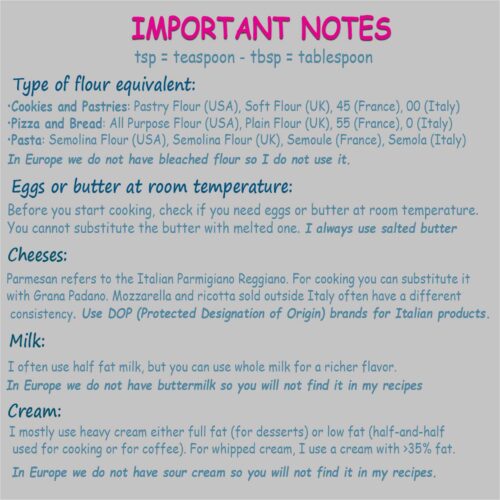

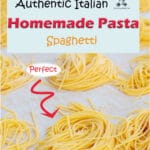

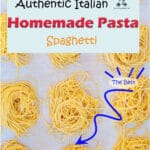


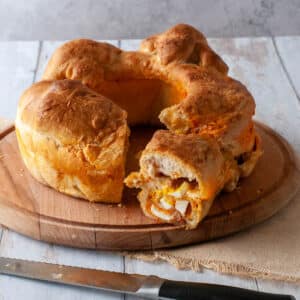



Nathan
What an informative post! I've never made pasta myself, but with all of these tips I feel like I might be able to make it work! Can't wait to try it out 🙂
Laura
You will definitely love it
Sara Welch
Such a light yet hearty pasta and much easier to prepare than I initially expected! Definitely prefer this homemade version over store bought pasta!
Laura
Thank you, yes big difference
Mary
I love rolling out pasta with my KitchenAid pasta roller! Makes me feel like a kid with play-doh, ha! This pasta was great!
Laura
Yes, it is so relaxing
Courtney
Hands down homemade pasta beats store bought pasta any day of the week. So much fun to make with the kids too!
Laura
Yes, children love it and eat it all
Michelle
Thanks for sharing such a detailed recipe on how to make Italian pasta! Can't wait to try it 🙂
Laura
Thank you will love it
Biana
Yum! Thank you for sharing the step by step for making pasta, always wanted to try making it.
Laura
You are welcome, I am sure you will like it